
St. Marks Place
North side of St. Marks Place from First Avenue to Avenue A
We're on the southwest corner of the intersection of St. Marks Place and First Avenue, looking down the easternmost block of St. Marks Place toward Avenue A and Tompkins Square Park. The building on the opposite corner dates to 1872.
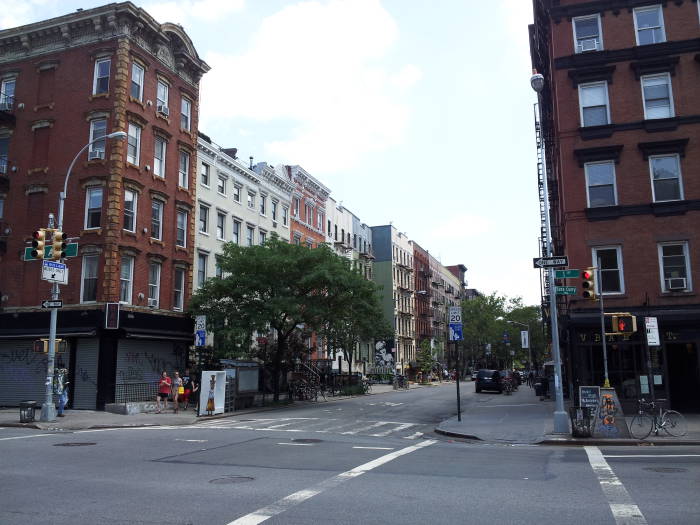
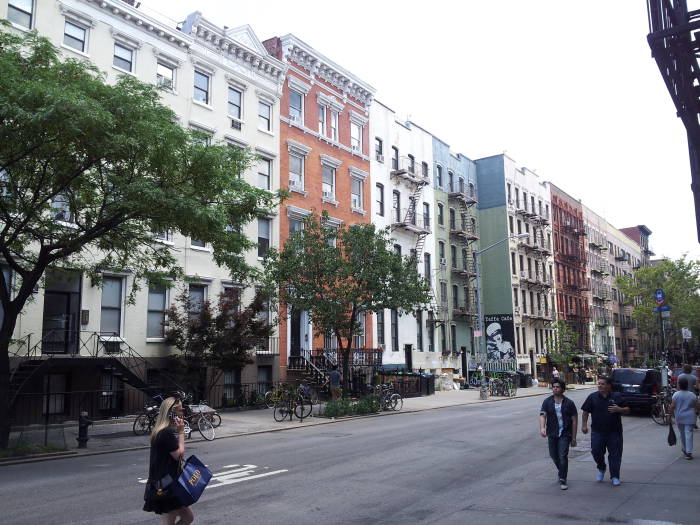
The Yaffa Cafe was at #97 St Marks Place for 30-some years, but it was closed in 2014 after complaints from a neighbor led to harsh health and safety inspections and its subsequent closing, as described here and here.
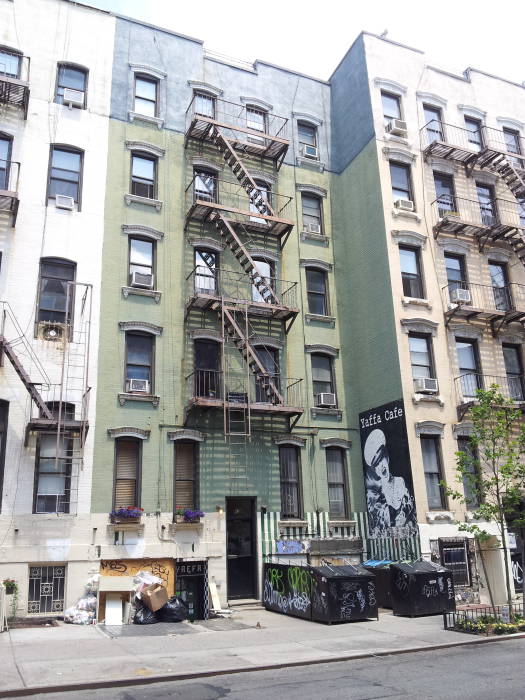
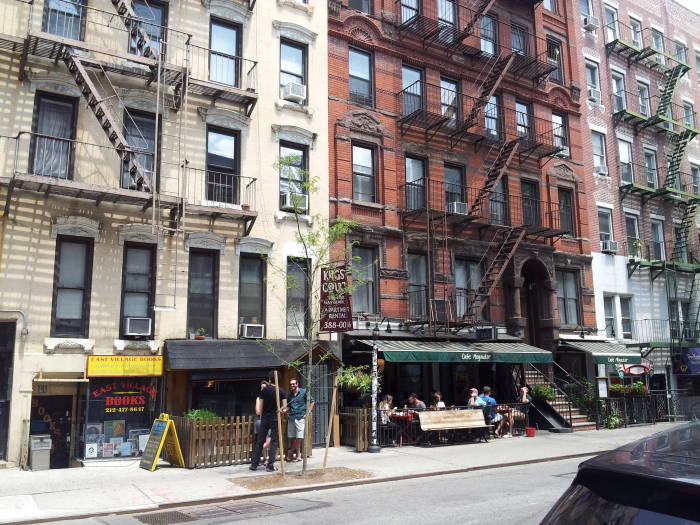
East Village Books and other cafes remain in business.
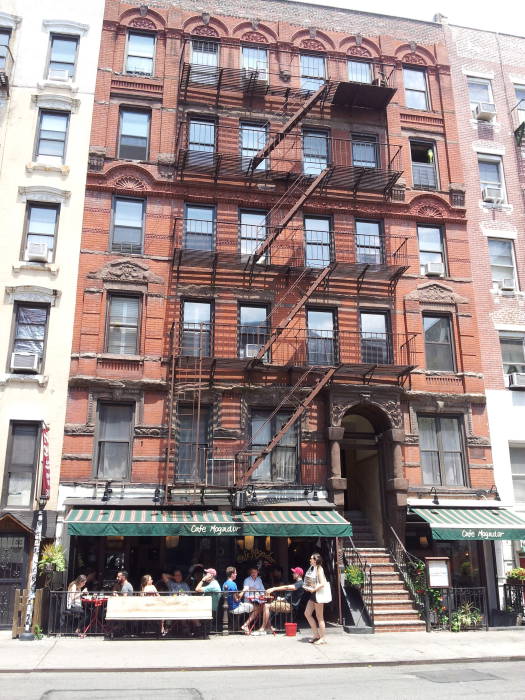
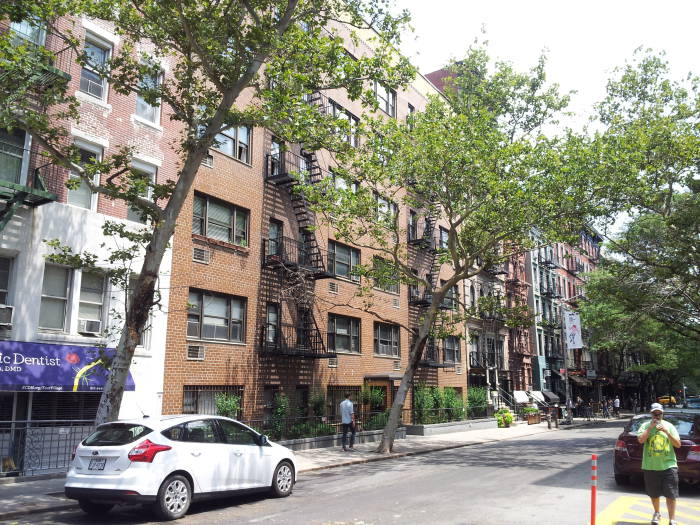
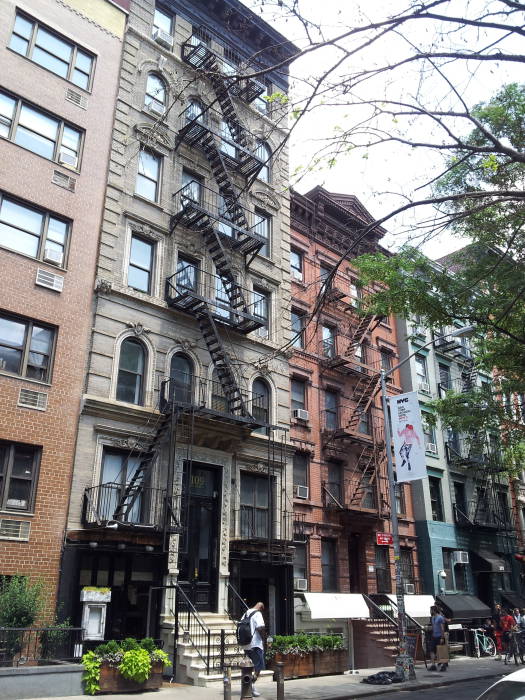
The crowd ahead is gathered outside Crif Dogs, famous for being the front for the neo-speakeasy Please Don't Tell. You enter the speakeasy through the telephone booth in the hot dog place. That is, if you can fit into the place given its enormous publicity and popularity.
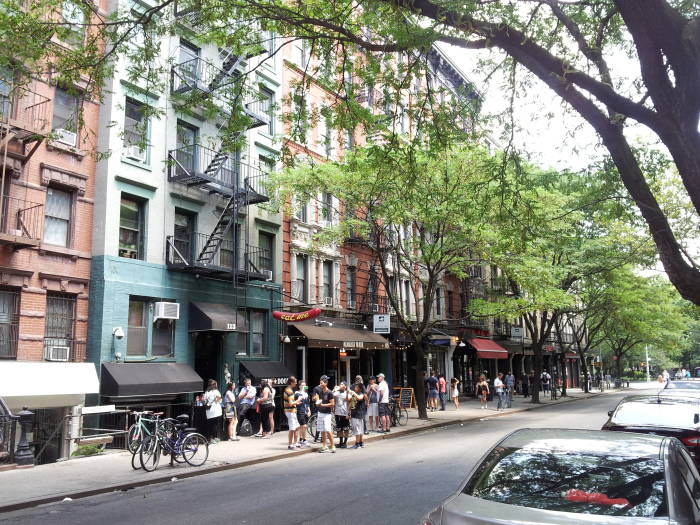
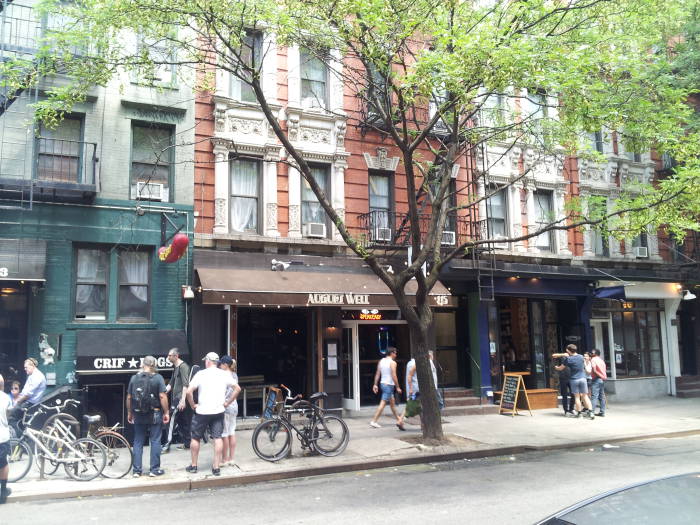
The neighboring place has gone so far as putting up a neon sign announcing "SPEAKEASY". That is pretty much the opposite of the concept.
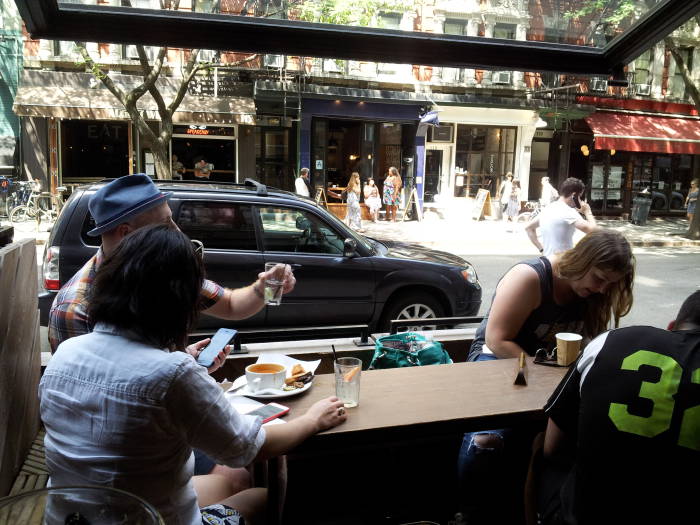
Here I'm in a nice local bar that doesn't try overly hard to be trendy, across the street from the hubbub.
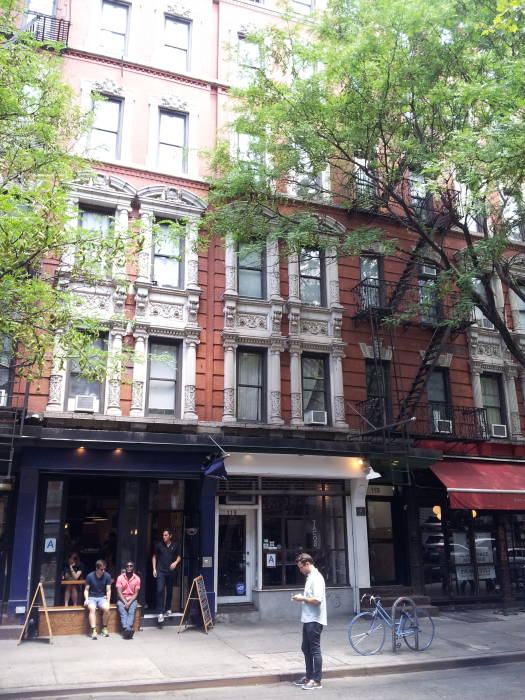
This is the eastern end of St Marks Place, where it tees into Avenue A and Tompkins Square Park.
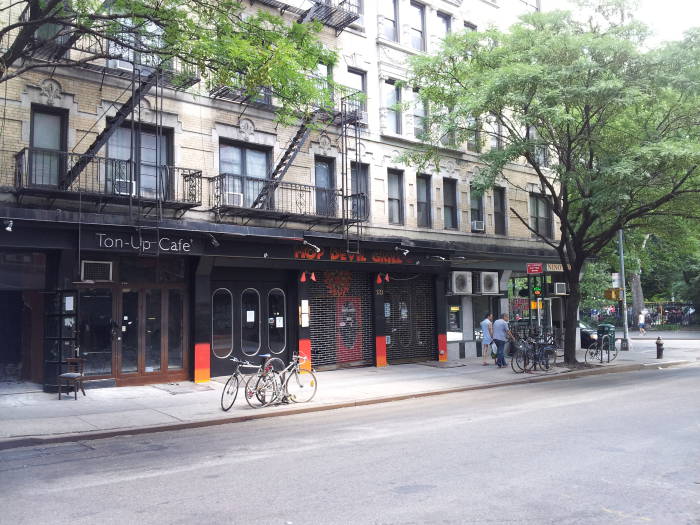
We have reached the east end of St. Marks Place and we can cross Avenue A into Tompkins Square Park. In the below pictures we are in the park looking back the length of St Marks Place.
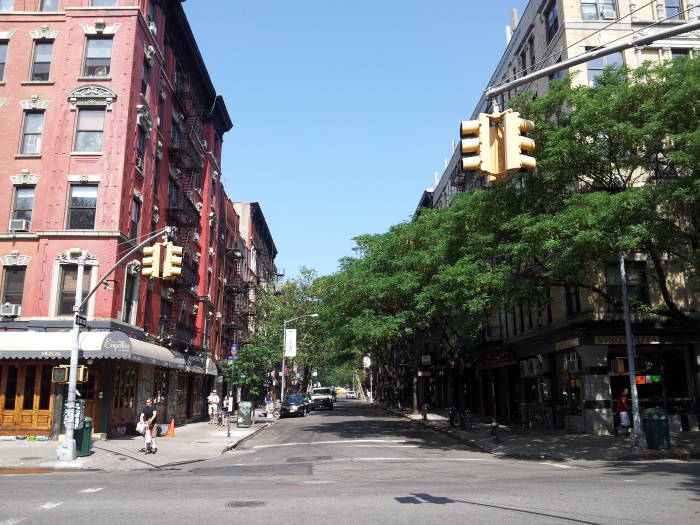
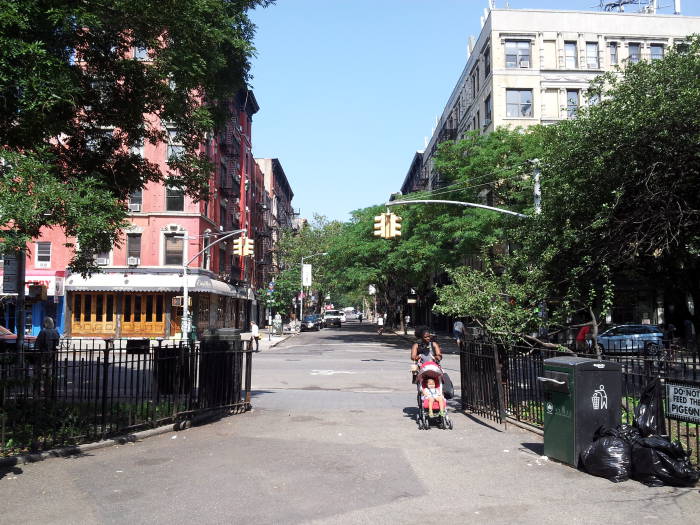
Tompkins Square Park lies between Avenue A and Avenue B on its west and east, and 7th Street and 10th Street on its south and north in the Alphabet City section of what is now called the East Village in Manhattan. It opened as a park in 1850, and has been the site of a number of uprisings through the years. Immigrants protesting unemployment and food shortages were attacked by police in 1857.
The Draft Riots of 1863 were the largest civil insurrection in the United States. The riots started when working-class men, primarily ethnic Irish, protested how wealthy men could pay a $300 commutation fee to hire a substitute and avoid being drafted to fight in the American Civil War. This turned into race riots with white rioters attacking blacks, ransacking and destroying public buildings, and burning the Colored Orphan Asylum at Fifth Avenue and 44th Street to the ground.
The Tompkins Square Riot of 1874 started with a demonstration by over seven thousand unemployed workers. About 1,600 policemen were deployed and forcibly ejected the crowd from the park.
In 1877, five thousand people gathered in the park to listen to revolutionary Communist speeches, and then fought with the National Guard troops sent to disperse them.
The park was a little quieter for the next century, until the 1960s and demonstrations against the Vietnam War.
By the 1980s the park was a high-crime area, a center for drug dealing and heroin use, and a large encampment of homeless people. Police attempted to clear the homeless encampment out of the park in August 1988, leading to a riot.
The park was closed to the public for a little over a year from early June 1991 until late July 1992, primarily for restoration but also to keep the homeless out of the park and to reduce neighborhood tensions.
USA Travel DestinationsBack to International Travel